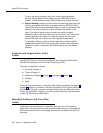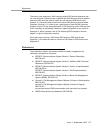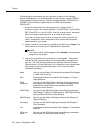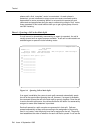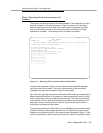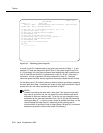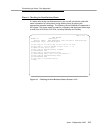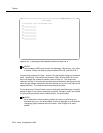
Constructing a Vector: One Approach
Issue 4 September 1995
2-7
assigned one of four priority levels:
top, high, medium,
or
low
. Within a given
split (the main split, in our vector), calls are delivered to the agent sequentially as
they arrive to the split queue and according to the priority level assigned.
Accordingly, calls assigned a
top
priority (if any) are delivered to an agent first,
calls that are assigned a
high
priority are delivered second, etc.
Finally, note that the call is queued to Split 5. Split numbers range from 1 to 99
[G3i], from 1 to 24 [G3s PBP, G3vs PBP], and from 1 to 255 [G3r].
Phase 2: Providing Feedback and Delay
Announcement
In the last section, we mentioned that a call remains queued until an agent
becomes available to answer the call. In the meantime, the caller would no
doubt like to hear some feedback assuring him or her that the call is being
processed. The following vector provides one solution.
Figure 2-5. Providing Feedback and Delay Announcement
NOTE:
Announcement 2771 could contain this message: ‘‘We’re sorry. All of our
operators are busy at the moment. Please hold.’’
The
wait-time
command in Step 2 provides a delay of a specified number of
seconds before the next vector step is processed. The time parameter may be
Page 1 of 3
CALL VECTOR
Number: 27 Name: base
Basic?y EAS?n G3V4 Enhanced?n ANI/II-Digits?n ASAI Routing?n
Prompting?n LAI?n G3V4 Adv Route?n
01 queue-to main split 5 pri l
02 wait-time 10 seconds hearing ringback
03 announcement 2771
04 _______________
05 _______________
06 _______________
07 _______________
08 _______________
09 _______________
10 _______________
11 _______________



